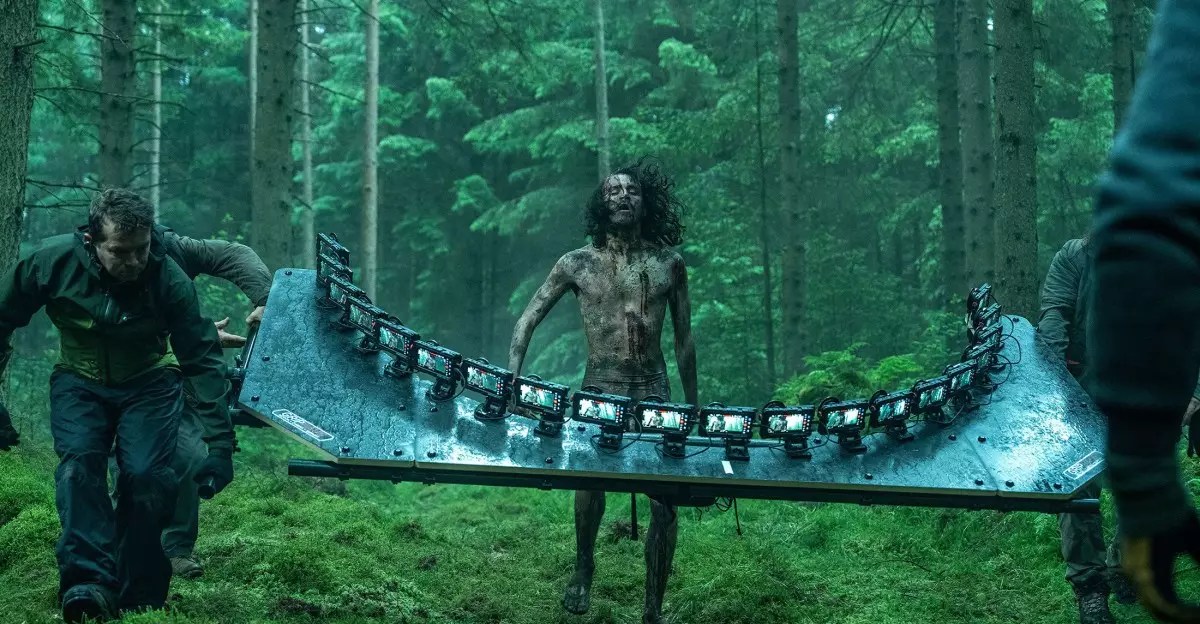In a world constantly on the lookout for fresh storytelling methods, the use of mobile technology in filmmaking is more than just an innovative gimmick—it’s a serious game-changer. Director Danny Boyle’s upcoming horror film, 28 Years Later, stitches together a narrative from his beloved 28 Days Later, but with a stunning twist: the movie is partially shot using a remarkable rig of 20 iPhones. This bold move signals a new era in cinema where traditional tools take a backseat to the rapidly evolving capabilities of smartphone technology.
Boyle’s choice to wield smartphones as cinematic weapons not only harkens back to his past work but also questions the very essence of filmmaking. After pioneering techniques in the early 2000s with digital video camcorders for the original, Boyle is now blending the nostalgia of those formats with cutting-edge hardware. His collaboration with esteemed cinematographer Anthony Dod Mantle leverages the modern equivalence of those camcorders—iPhones—building a bridge from past to present, while hinting at the plethora of creative possibilities ahead.
Reshaping Visual Storytelling
Why such an unconventional approach, and what does it signify for the realm of visual storytelling? According to Boyle, the 20-phone rig serves as a “poor man’s bullet time,” opening up a 180-degree canvas that enhances the viewer’s connection to the action. This technology, with its capability to capture scenes from multiple angles simultaneously, allows the filmmakers to edit in countless ways—resetting perspectives and crafting an experience that exits traditional linear storytelling. As a result, audiences can find themselves in the midst of an action, spinning around with the characters while adjusting the narrative flow in real-time. The implications of this are profound; it invites viewers into the story, making them not just passive observers but active participants in the unfolding drama.
Furthermore, it’s this technological leap that facilitates creative censorship around violence—allowing for an artistic expression of brutality without succumbing to the usual exploitation. Boyle’s vision offers a rather fascinating juxtaposition of horror and art, heightening the emotional tension while maintaining an aesthetic quality that invites deeper reflection.
The Arts Meets Technology
This fusion of art and technology is not limited to just one filmmaker or one film. As we move deeper into the 21st century, we see a democratization of filmmaking tools; the iPhone makes filmmaking more accessible, allowing aspiring artists to create high-quality content without exorbitant budgets. Similar projects could flourish, pushing the boundaries of creativity and encouraging voices that may have otherwise been suppressed under traditional production models.
In essence, as 28 Years Later dives deeper into uncharted narrative waters utilizing iPhone technology, it leads us to consider the future of film. How will we, as viewers and creators, redefine cinematic experiences? Are we prepared for the possibilities that a smartphone can hold, transforming how stories are told? These questions resonate deeply, serving as a call to both filmmakers and fans alike to embrace innovation and imagination, shaping a future where art and technology interlace more closely than ever before.


Leave a Reply